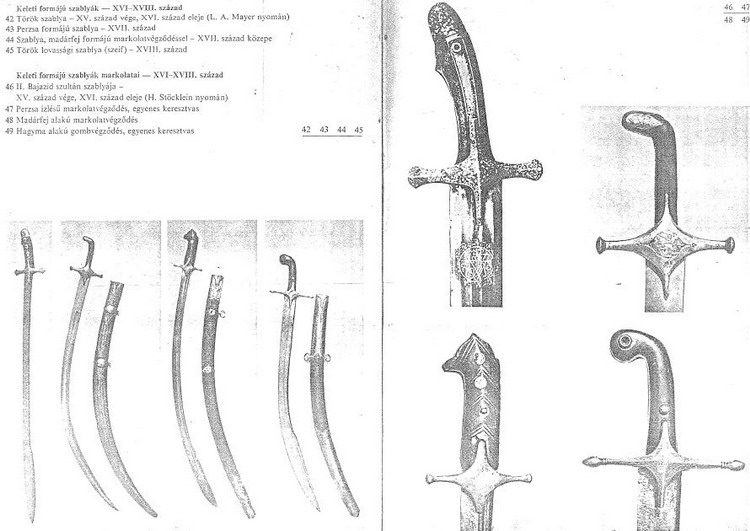| Author |
Message |
|
Peter Gajdos
Location: hungary Joined: 26 Mar 2011
Posts: 15
|
 Posted: Sat 01 Oct, 2011 11:11 am Post subject: Old Hungarian karabela with engrave blade, restored mounts? Posted: Sat 01 Oct, 2011 11:11 am Post subject: Old Hungarian karabela with engrave blade, restored mounts? |
 |
|
Hello, I have this old hungarian karabela with a real old blade with engraved symbols and text, however the mounting look fresh, I believe it was restored and cleaned, or worst case it was remade to authentic level. I have a friend who accused the sword having original blade but indian made remade mounting because of the floral them on the fittings and the shape of the crossbar. Turkish influence was big on 16-18th century hungarian swords, and turkish- hungarian pattern are very similar anyway, indian swords used islamic style swords and pattern so not sure why he insist they are indian (sounds very strange) Can someone tell me if the crossguard is authentic style and the fittings ,pattern or is it real indian.
Thank you in advance
regards
Peter G.
 Attachment: 57.08 KB Attachment: 57.08 KB
[ Download ]
 Attachment: 103.27 KB Attachment: 103.27 KB
[ Download ]
 Attachment: 54.42 KB Attachment: 54.42 KB
[ Download ]
 Attachment: 84.08 KB Attachment: 84.08 KB
[ Download ]
 Attachment: 58.07 KB Attachment: 58.07 KB
[ Download ]
|
|
  |
 |
Sa'ar Nudel

|
 Posted: Mon 03 Oct, 2011 4:31 am Post subject: Posted: Mon 03 Oct, 2011 4:31 am Post subject: |
 |
|
Szervusz Peter. I'm afraid your friend is correct. It appears to be a decent blade, probably 18th century, in a rather modern Indian made "suit". That intricate silver decoration is typical.
Curator of Beit Ussishkin, regional nature & history museum, Upper Galilee.
|
|
   |
 |
Romulus Stoica

Location: Hunedoara, Transylvania, Romania Joined: 26 Oct 2006
Posts: 124
|
 Posted: Mon 03 Oct, 2011 10:29 pm Post subject: Posted: Mon 03 Oct, 2011 10:29 pm Post subject: |
 |
|
|
Could also be polish, the acanthus leafs are a common decorative motif for polish, hungarian and transilvanian sabres but the cross guard is not hungarian. The hungarian sabre crossguard guard has a distinctive almond or elongate oval shape in the middle.
|
|
   |
 |
|
Ozsváth Árpád-István
|
 Posted: Thu 06 Oct, 2011 8:35 pm Post subject: Posted: Thu 06 Oct, 2011 8:35 pm Post subject: |
 |
|
Szia Péter!
There are certain mismatches betweet the blade and the hilt. The blade is typical 18th century, the hilt is mid 17th century oriental style. The engavings on the blade suggest the 1848 revolution period. The fittings on the scabbard looks recent.
 Attachment: 88.21 KB Attachment: 88.21 KB

|
|
   |
 |
|
|

